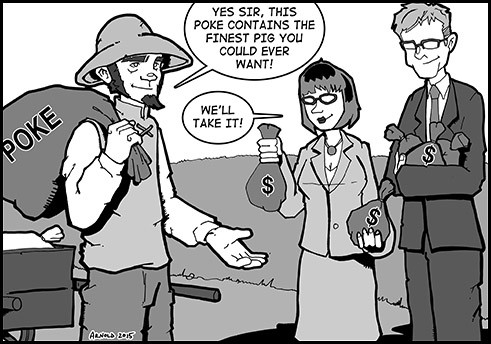Short on details, a new economic development plan was nonetheless endorsed by Woolwich council in a split decision Tuesday night.
The move commits the township to dropping $160,000 over the next four years on an as-yet-formed or defined Waterloo Region Economic Development Corporation (WREDC). A region-wide initiative, the organization would eventually take a collective $2 million a year from residents of the four townships and three cities.
Two councillors objected to the plan, noting the scarcity of details in a staff report, paucity of benefits to residents and lack of accountability for the public’s money. Councillors Patrick Merlihan and Larry Shantz pushed to defer the matter until council could be shown real figures backing the expenditure of residents’ money on the new venture.
“There are a lot of things missing,” said Merlihan of the staff report’s lack of real numbers. “I would like a more detailed report.”
He said the document was not satisfactory, providing an inadequate amount of information for councillors to make a decision. Calling it “thin on accountability,” he questioned whether the report would make a suitable business plan if the region went to the bank looking for $2 million.
The joint economic development strategy came out of efforts by the chief administrative officers of the eight municipalities – the region plus the seven lower-tier communities – to coordinate their efforts. Using tax dollars, they hired a consultant. The resultant report from Malone Given Parsons Ltd. called for the creation of a central office for economic development working with existing municipal programs, the Greater Kitchener Waterloo Chamber of Commerce and Canada’s Technology Triangle (CTT) towards common growth.
At this week’s council meeting, township CAO David Brenneman argued in favour of a “cohesive” strategy throughout the region. While admitting there are concerns about the lack of details and accountability, he stressed the new strategy was a work in progress that would eventually pay off in the form of more growth in the region.
He brought in CTT chair Ian MacNaughton to bolster his point.
MacNaughton, too, argued for a coordinated approach to economic development, pointing to the recent closure of the Schneider’s plant in Kitchener, with owner Maple Leaf Foods moving production to Hamilton.
“We need to bring our A game to the future.”
While CTT has spent years promoting Waterloo Region as a location for direct foreign investment – building links with Germany, the Netherlands and, more recently, China – the group’s limited budget and reach made it eager to be part of a larger project, he added. CTT’s operations could be rolled into the new WREDC.
Kevin Martin of Martin’s Family Fruit Farm in St. Jacobs, who serves on the advisory committee for the regional group, also praised the economic development strategy. The benefits will be spread out across the region, he said.
“We may not see every little benefit coming back to us as a township.”
That theme was picked up by Brenneman, too, who pointed to the “collective good” rather than just what Woolwich is going to get out of this effort.
That was a concern for Shantz, however, who pointed out the report appears to focus on the high-tech sector.
“How is Woolwich going to benefit from that?”
For Merlihan, there was no indication of what the township or other municipalities would be getting in return for their investment in a report that was long on platitudes and short on details and justification for committing millions of dollars.
“It had very little substance,” he said of the report. “I support the concept. But this report, I’m really dissatisfied with.”
If ultimately approved, the WREDC plan would be the first joint economic development strategy across the region.
Some of the corporation’s responsibilities suggested by the Malone Given Parsons study include implementing a regional economic strategy, doing regional data collection and analysis, and doing regional-scale marketing.
Another recommendation calls for a change to the provincial Municipal Act to allow the region a say in land development. Currently under the act, only individual municipalities have the jurisdiction to buy, develop and sell land for industrial and commercial purposes.
Woolwich’s share in getting this going is $25,000 this year, $35,000 next and $50,000 in 2017 and 2018. The township spent $10,000 last year in the run-up phase. Councillors are expected to discuss the plan again on March 10.









